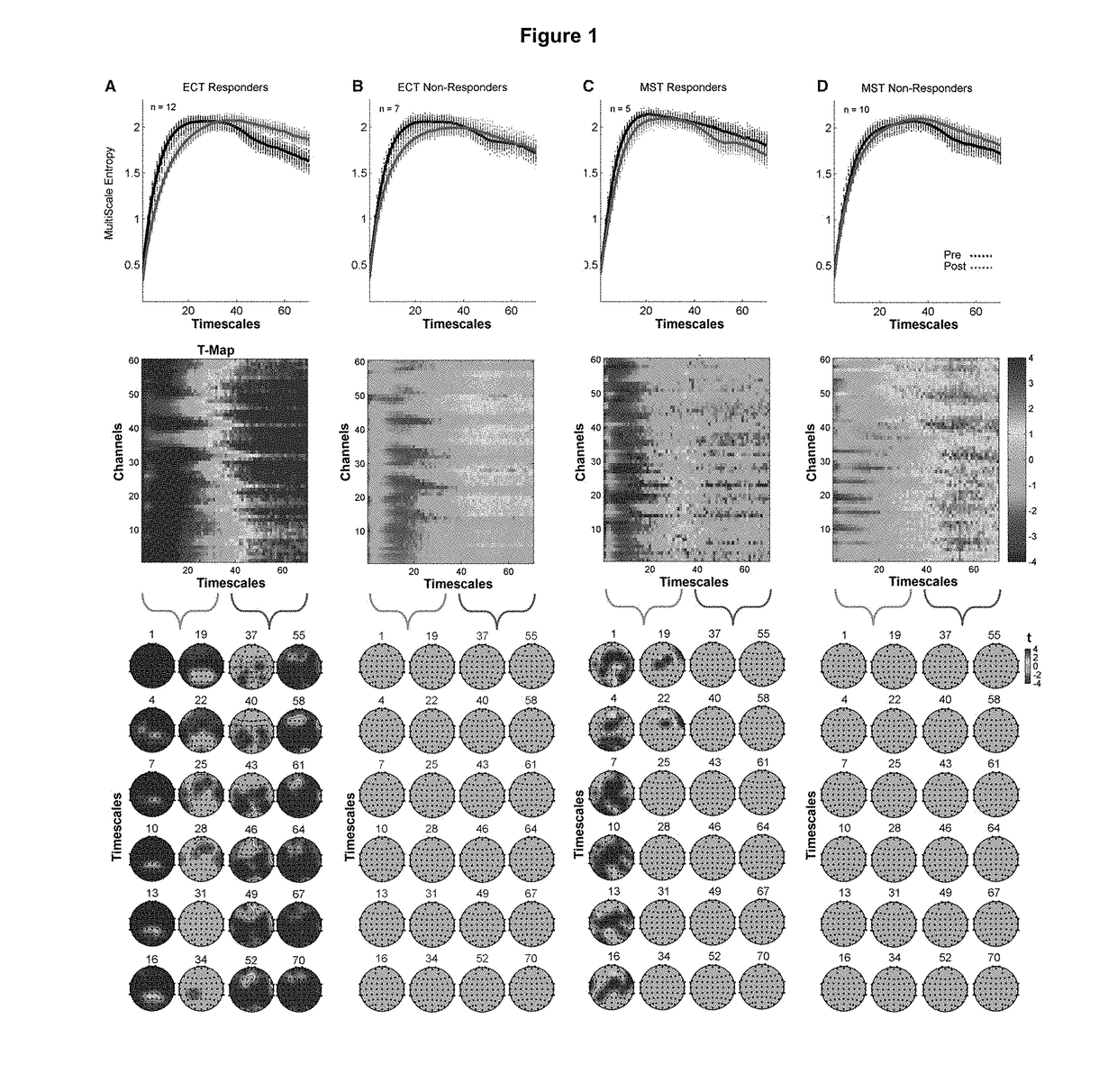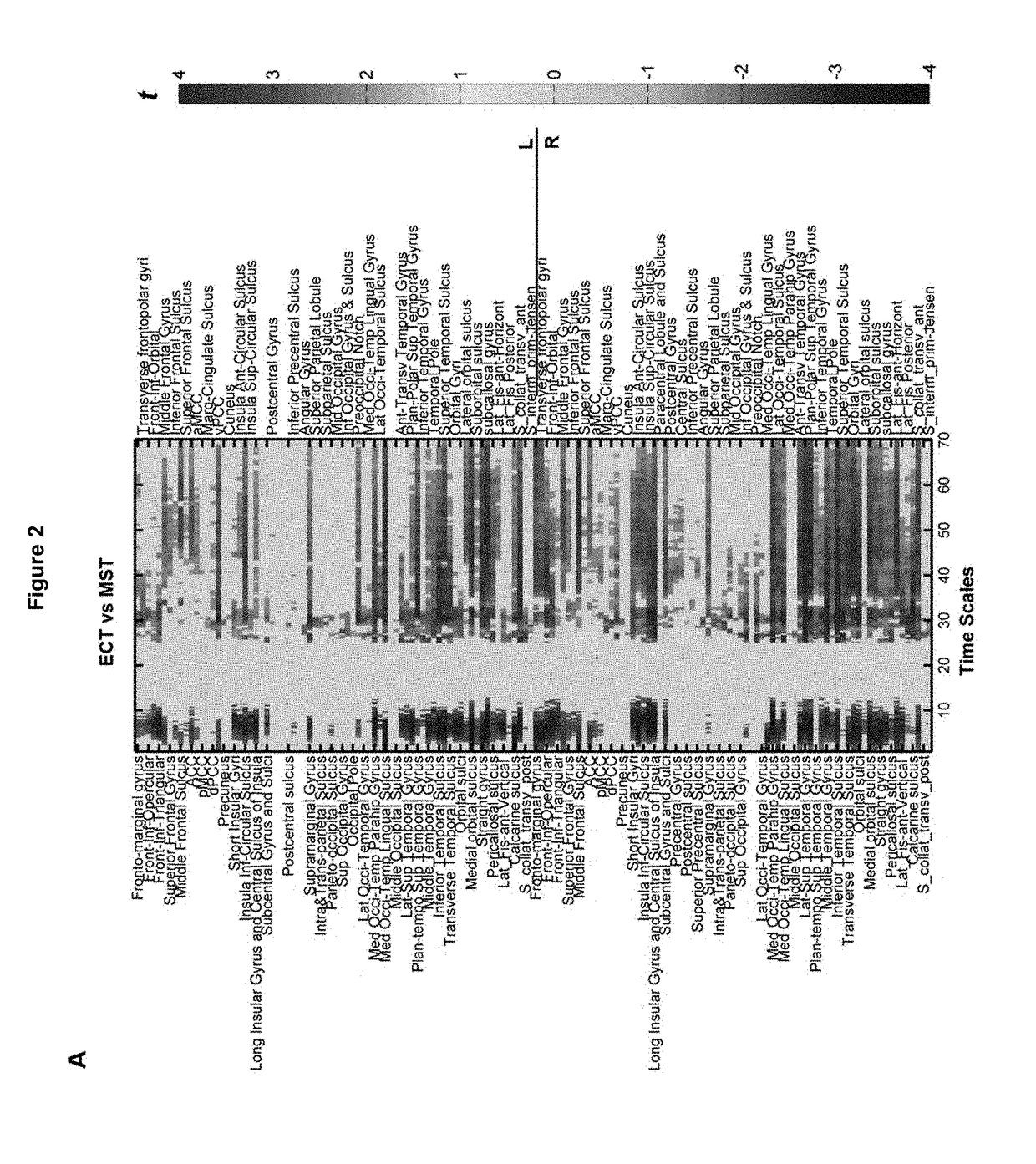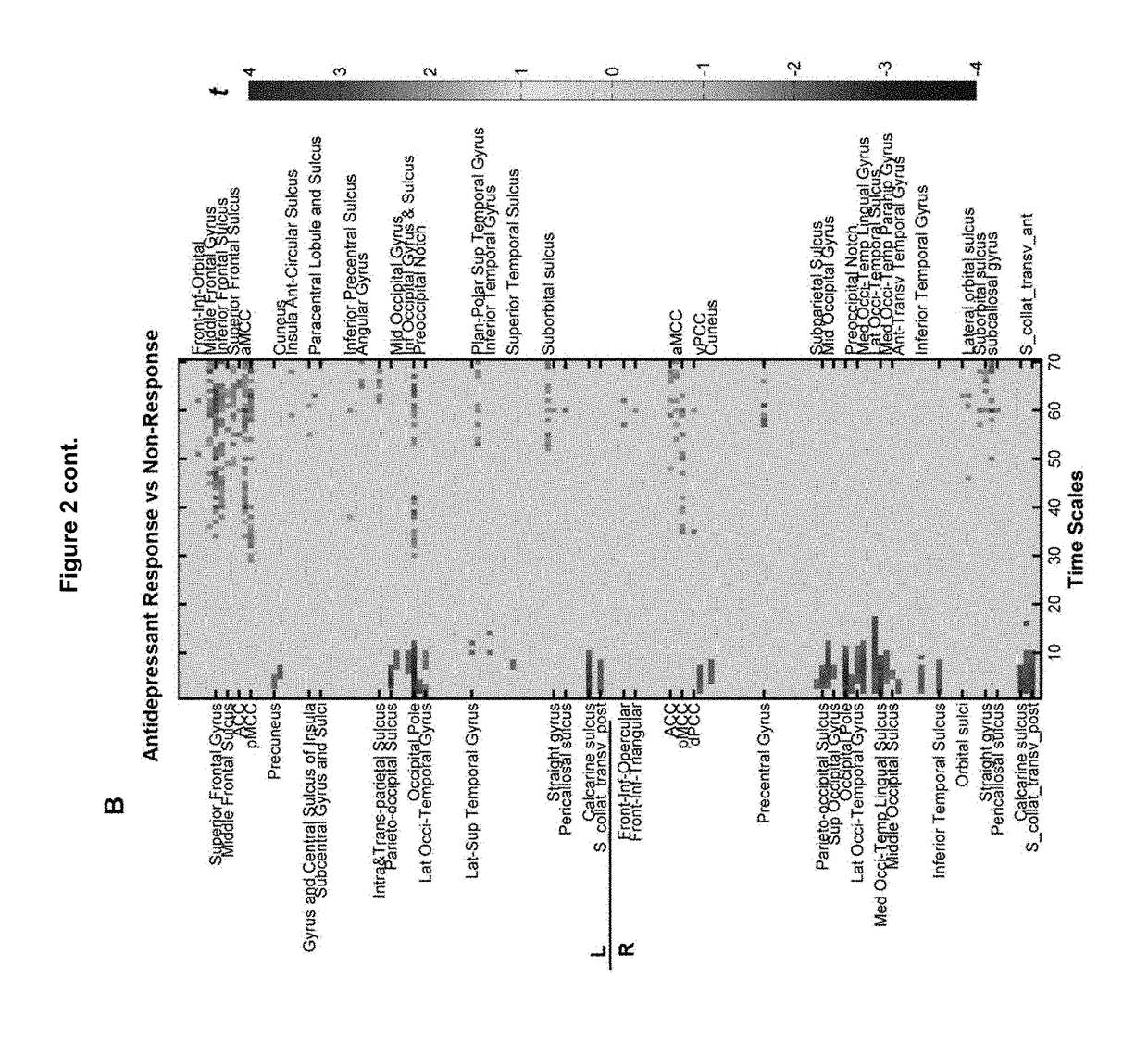Methods of Using Brain Temporal Dynamics
a brain temporal and dynamic technology, applied in the field of brain temporal dynamics, can solve the problems of limiting its widespread use, limiting the development of new antidepressant interventions with comparable efficacy, and limiting the progress of antidepressant interventions. the effect of intervention
- Summary
- Abstract
- Description
- Claims
- Application Information
AI Technical Summary
Benefits of technology
Problems solved by technology
Method used
Image
Examples
example 1
Escitalopram (Non-Seizure, Pharmacological Antidepressant) Brain Temporal Complexity Throughout 8 Weeks of Escitalopram Therapy
Material and Methods
[0108]95 participants were included in this study. Data were collected as part of the CAN-BIND 1 project (Lam et al., 2016). Participants were outpatients aged 18-60 years of age, and met DSM-IV-TR (2000) criteria for major depressive episode (MDE) in MDD, confirmed by the Mini International Neuropsychiatric Inventory (MINI) (Sheehan et al., 1998). Data were gathered across four study sites: University Health Network, Centre for Addiction and Mental Health in Toronto, Queen's University in Kingston, Ontario, Canada, and University of British Columbia in Vancouver, British Columbia, Canada. Study procedures were approved by research ethics institutional review boards at each site. All participants signed written informed consent prior to participation. At study enrollment, all participants were experiencing a MDE duration ≥3 months with a ...
PUM
 Login to View More
Login to View More Abstract
Description
Claims
Application Information
 Login to View More
Login to View More - R&D
- Intellectual Property
- Life Sciences
- Materials
- Tech Scout
- Unparalleled Data Quality
- Higher Quality Content
- 60% Fewer Hallucinations
Browse by: Latest US Patents, China's latest patents, Technical Efficacy Thesaurus, Application Domain, Technology Topic, Popular Technical Reports.
© 2025 PatSnap. All rights reserved.Legal|Privacy policy|Modern Slavery Act Transparency Statement|Sitemap|About US| Contact US: help@patsnap.com



